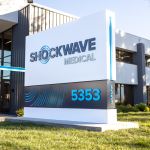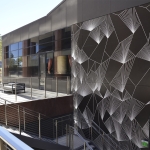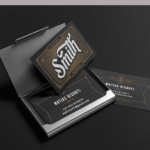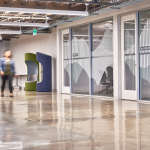San Francisco, the city of dreamers, innovators, and artists, is a place where creativity and self-expression are celebrated in every corner. One of the best ways to make a statement and stand out from the crowd is through custom signages designed to showcase your brand, event, or message.
Custom signages are a powerful tool that can help you promote your business, convey your identity, or create an immersive experience for your customers. If you’re looking to get your message out there, then this blog is for you. In this post, we’ll explore the process of designing custom signs tailored to your specific needs, whether it’s for businesses, events, or public spaces in San Francisco. We’ll also dive into sign fabrication, learn about the techniques and materials used in sign fabrication, including metal signs, acrylic signs, vinyl graphics, and more.
Designing Custom Signage
Believe it or not, your vision is the key to initiating the process of custom signage design. Whether it is for an upcoming corporate event or for your business, you should have clarity about your goals, target audience and exact needs. Once your needs are clearly chalked out, hire a designer having expertise and experience in translating ideas into realty. A properly designed signage will effectively build your brand identity, convey your message and conform to local sign rules and regulations.
Scalability is an important factor in this regard, implying that it can be effectively reproduced in different materials and sizes. After you approve the design, it is now time for fabrication.
Sign Fabrication Techniques and Materials
There are several sign fabrication techniques and materials available, each with its own strengths and weaknesses. Some of the most common materials include:
Metal signs: These usually feature a durable, long-lasting metal such as aluminum or stainless steel. Metal signs are perfect for outdoor use as they can withstand harsh weather conditions.
Acrylic signs: Made from clear or frosted acrylic, these signs are lightweight, versatile, and great for indoor or outdoor use.
Vinyl graphics: These are adhesive decals that are perfect for temporary or semi-permanent signage needs. Vinyl graphics can be easily removed or replaced.
LED signs: These are highly energy-efficient and come in a wide range of sizes and shapes. LED signs are perfect for businesses looking to stand out with eye-catching illuminated displays.
Whichever material or technique you choose, it’s important to work with a reliable sign fabricator who can turn your design into reality with precision and attention to detail.
Custom Signage Installation and Maintenance
Once your custom sign is fabricated, it’s time for installation. This is a key step that requires careful planning, preparation, and expertise. Depending on the type of sign and installation location, special equipment and permits may be required. It’s important to work with a professional installation team who can ensure your sign is safely, accurately, and securely installed for maximum impact and longevity. After installation, regular maintenance is essential to ensure your sign remains in top condition. This includes regularly cleaning, painting, and repairing the sign as needed.
Conclusion:
Custom signages are a great way to showcase your brand, event, or message in San Francisco. With the right design, fabrication, installation, and maintenance, your custom sign can be a powerful tool that helps you stand out and communicate your message effectively. Whether you need a metal sign, acrylic sign, vinyl graphics, LED sign, or any other type of custom signage, it’s important to work with a designer and fabricator who can turn your vision into a reality. At Lux create, our team of experts can work with you to create custom signages that exceed your expectations and enhance your brand identity. Contact us today to learn more about our custom signage services in San Francisco.




